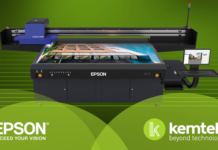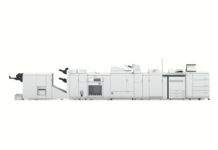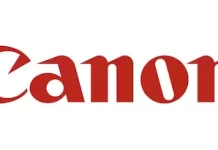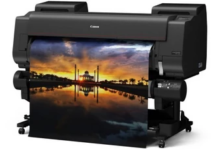James de Waal, head of marketing, business imaging group at Canon South Africa, states that the time for compromising between wide format productivity and quality is over.
According to research, more than 40% of wide format print jobs need to be turned around within 24 hours (1). While 72% of PSPs report increasing demand for fast turnaround, 61% see a growing requirement for short runs and 59% observe rising expectations of just-in-time delivery (JIT) (2). To meet these customer expectations, PSPs have often felt compelled to focus their digital investments on boosting productivity, but, in doing so, have then had to compromise other performance attributes, such as print quality.
Inkjet print quality is the product of many inter-related parameters such as drop volume, dot gain and placement accuracy, coalescence, resolution, the number of colours and passes, the media used, and of course colour management. But when assessing real-world print quality, the single most important factor is how the final ink layer is formed on the media, and that really depends on the technology used.
While 162cm (64”) latex and eco-solvent roll-to-roll systems typically require a relatively low initial investment and are easy to use, these printers can only achieve high quality at low output speed, due to two factors: the need for an evaporative drying stage and the high degree of dot gain and coalescence of the latex and eco-solvent inks.
The limitations of these inks become greater at higher print speeds and on media with higher rates of absorption. To overcome this issue, you have to gradually build the printed image in multiple passes to minimise the effect of coalescence. While some have found a workable solution by depositing less ink at each pass and allowing time for the ink to dry before printing another layer, this inevitably has a significant impact on productivity and turnaround time.
When running at high speeds, the print quality of prevailing systems can also be affected by other knock-on effects, such as nozzle failure caused by ink build-up or debris. As a result, the maintenance needed to clean the nozzles or replace the printhead will lead to unscheduled downtime, while the defective print may be unsellable.
With Canon UVgel, you have access to a technology solution that combines many of the benefits of established inkjet printing systems, but also resolves a number of their inherent limitations, enabling you to combine the highest output speeds with extended colour gamut and optimal print-to-print consistency across a broad choice of media. This offers the precision quality needed for indoor graphics and the essential print durability for outdoor applications.
The key to this capability is that UVgel has been designed from the ground up to be completely different to evaporative ink technologies to overcome current limitations with roll-to-roll production. Once the UVgel ink is deposited on the substrate – which is maintained at a consistent temperature by the printer platen – the ink droplets immediately solidify into a gel. This prevents any uncontrolled dot gain or unintended coalescence, while ‘pinning’ the ink to the media drop by drop delivers more accurate area coverage and drop position.
Laying down the appropriate amount of ink in fewer passes also substantially reduces the time required to produce the finished print, so that most users of the technology are able to print at 40 to 60sqm per hour, even for highest quality output, representing a five-fold increase in print speed for some customers compared with their evaporative printing systems.
The technology also features an automatic quality control that uses sound waves to continuously monitor the printhead nozzles to detect any blockages or defects. When a malfunctioning nozzle is detected, the nozzle is automatically switched off, without the need for operator intervention mid-run, and the neighbouring nozzles compensate to maintain consistent quality with no white lines.
Whether producing decorative print applications, such as wallcoverings and floor graphics, or retail or outdoor graphics for demanding brand owners, aesthetic print quality and durability, closely followed by rapid turnaround, are key to customer satisfaction. So far though, it’s virtually impossible to produce these multiple applications on a single device without some level of compromise.
Indoor applications to be viewed up close require precise image and colour reproduction. This limits the suitability of conventional UV, which is inferior in quality to eco-solvent and latex though faster to cure/dry. Similarly, while latex ink is waterproof and offers an outdoor lifespan similar to eco-solvent, the high heat required to dry this type of ink means that the range of usable media for indoor applications is restricted and energy costs are higher. And while eco-solvent is suitable for some indoor environments, its VOC content restricts its use. Unfortunately, these are real dilemmas when producing diverse applications against tight deadlines.
If you are seeking to ramp up productivity to meet escalating demand, you simply cannot afford to compromise quality and waste media or risk losing revenue, or worse, a customer. FESPA’s 2018 Print Census revealed that quality control is now a key investment priority (3). With the latest developments in ink, you can increase customer satisfaction and improve consistency, while maintaining and boosting production speeds.
A high quality applications portfolio requires solutions that perform well across a diverse range of media. Hundreds of graphics producers are taking advantage of the flexible capabilities of UVgel and are already seeing a significant impact on both production and quality. To truly embrace the growth opportunities in graphics and décor, you need technologies that are designed to truly meet your needs and the expectations of your customers – the time for compromises is over.
(1) Wide-Format Printing Critical Element in the Communications Mix, InfoTrends 2013: http://www.infotrends.com/public/Content/Multiclients/BDSWideFormatPrinting.html
(2) https://www.fespa.com/en/news-media/press-releases/2018-print-census-reveals-strategic-responses-to-escalating-demand
(3) https://www.fespa.com/en/news-media/press-releases/2018-print-census-reveals-strategic-responses-to-escalating-demand
|
LOCAL DISTRIBUTOR |















